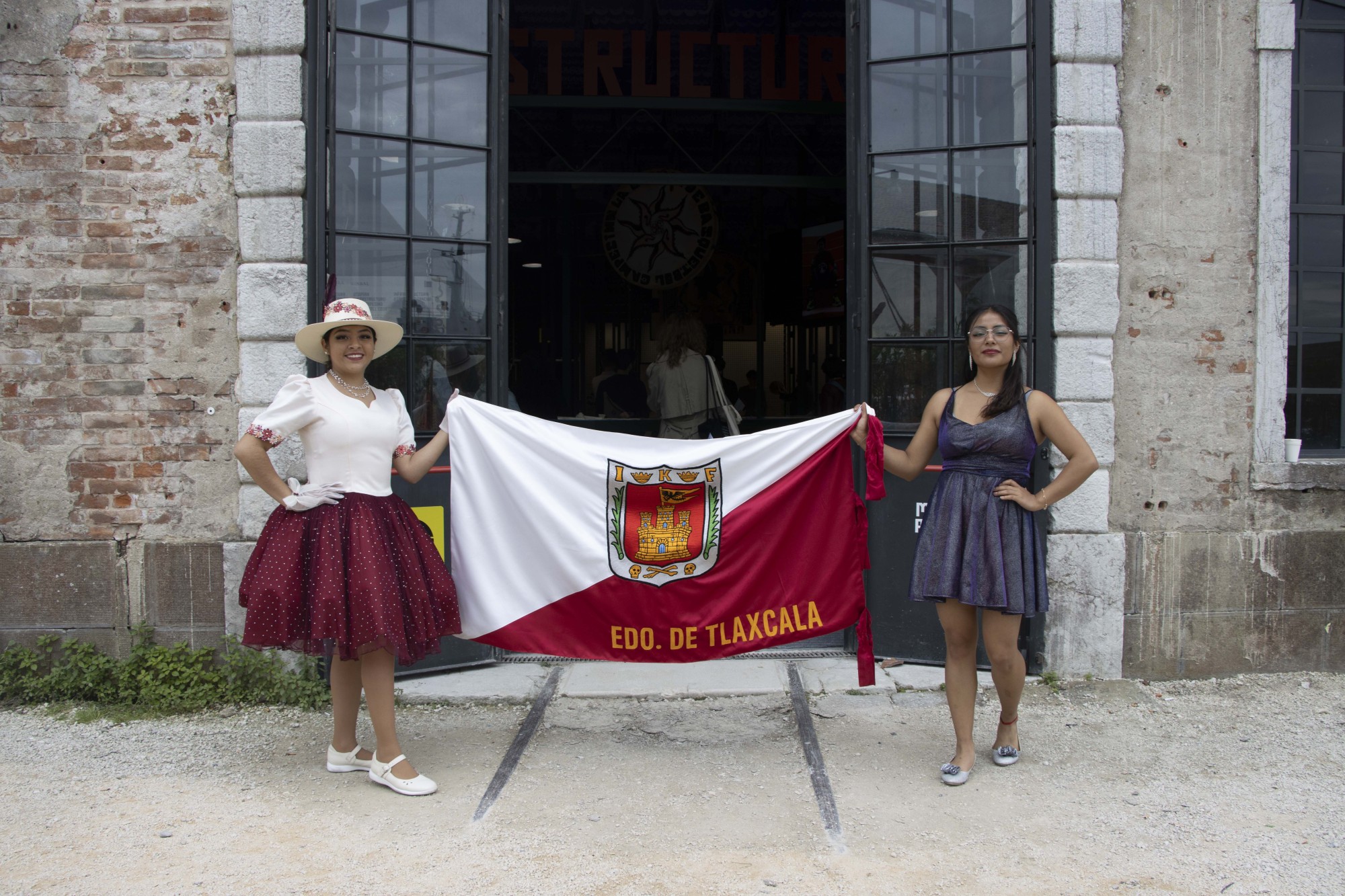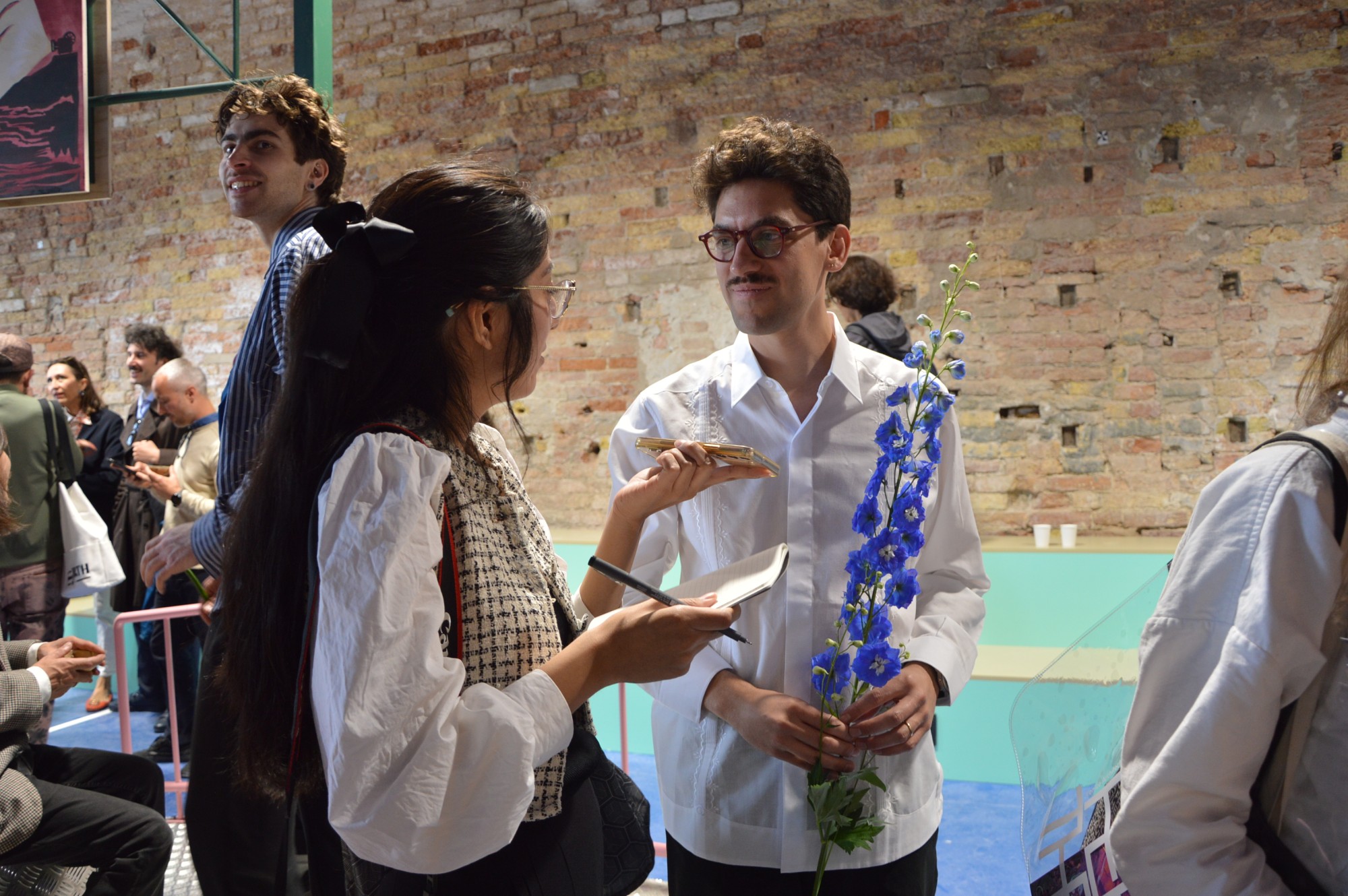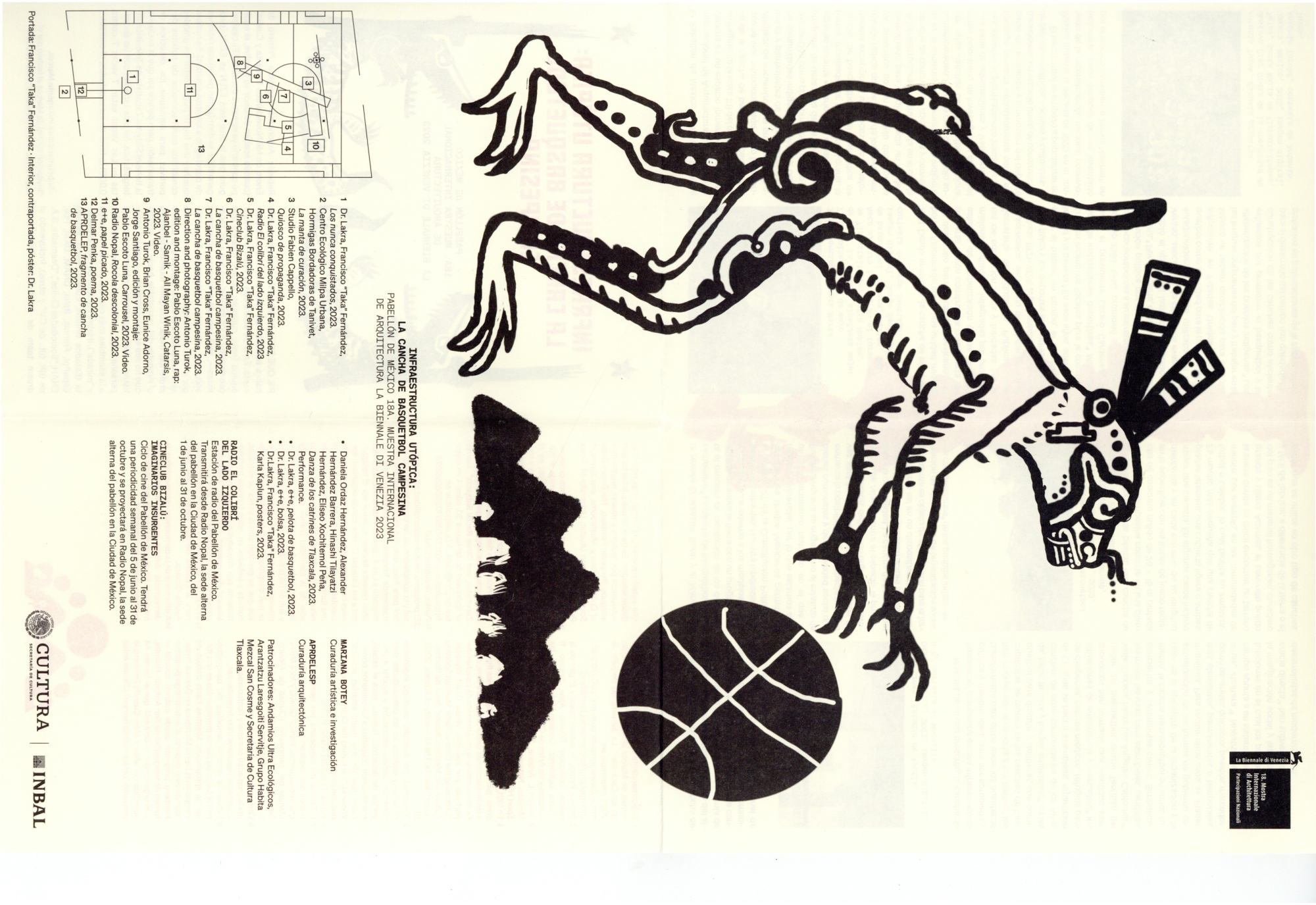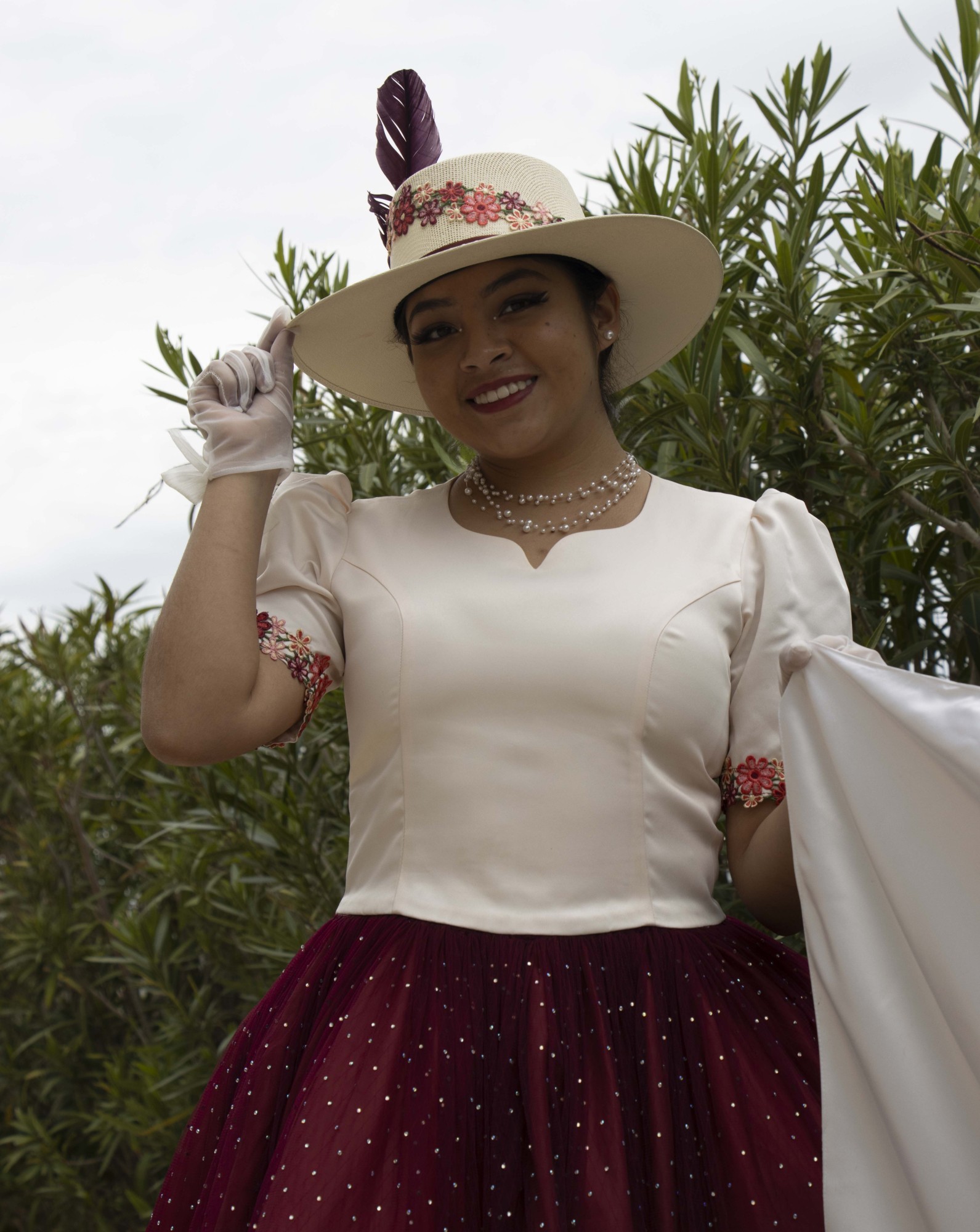Field Notes from the Pluriversity: Reflections on the 18th Venice Architecture Biennale
Jugando Basquetbol: Una Entrevista con Rodrigo Escandón Cesarman
Jugando Basquetbol: Una Entrevista con Rodrigo Escandón Cesarman
Curator Rodrigo Escandón Cesarman met with Karla Andrea Perez in the Mexican Pavilion, where the two shared a conversation in Spanish on the roles of basketball and dance both in the diaspora and at home.
REC: Rodrigo Escandón Cesarman/ KAP: Karla Andrea Perez

Ya que estamos aquí. ¿Cómo crees que ha sido recibido el proyecto?
Now that we’re here, how do you think the project has been received?
La verdad es que he tenido poco chance de hablar con gente que ha venido, pero creo que la gente agradece mucho que no haya maquetas ni planos. Siento que muchas veces en este tipo de exposiciones no sé, llevas todo el día viendo planos y planos y planos y planos y planos. Y si llegas a un lugar donde puedes relacionarte con temas que son totalmente espaciales y tiene que ver con arquitectura y urbanismo, pero sin necesariamente usar las herramientas de la profesión, eso creo que ayuda mucho a como abrir otro tipo de discusiones. Siento que ha pasado un poquito, creo que eso ha ayudado. Y la otra cosa que creo que ha pasado es que ha sido recibido o ha sido experimentado en varios niveles. Alguien puede venir y echar una canasta e irse y ya entendió el pabellón en cierta forma. ¿No? Y la otra forma que bueno, es leer el texto de sala, leer el panfleto, platicar, que te expliquen todo esto también funciona. Nos interesa mucho también la otra forma de recibirlo, que es nada más experimentarlo directamente, que sea una experiencia espacial.
The truth is that I haven't had much of a chance to talk to people who have come, but I think people are very grateful that there are no models or plans. I feel that many times in these types of exhibitions, you spend all day looking at plans and plans and plans and plans and plans and plans. And if you get to a place where you can relate to themes that are totally spatial and have to do with architecture and urbanism, but without necessarily using the tools of the profession, I think that really helps to open up other kinds of discussions. I feel that it has happened a little bit, I think that has helped. And the other thing that I think has happened is that it's been received or experienced on various levels. Someone can come and throw a basket and leave, and they’ve understood the pavilion. In a way, right? And the other way is to read the wall text, to read the pamphlet, to talk, to have it all explained, also works. We are very interested in the other ways of receiving it, which is to experience it directly, as if it were a spatial experience.
¿Nos puedes hablar más sobre los nunca conquistados? Quien decidió poner ese lema ahí.
Can you tell us more about the never conquered? Who decided to put that slogan there?
Hicimos la curaduría con la doctora Mariana Botey, que es una artista e historiadora del arte que lleva, no sé, más de veinte años documentando, acompañando y trabajando con todas estas luchas, las causas indígenas y campesinas. Ella invitó también a una serie de artistas que también han trabajado mucho en este tipo de cosas. Entonces entre los artistas y pudimos poner este eslogan, que es un slogan Mixe. Son personas indígenas de la sierra de Oaxaca y bueno, los mixes tienen este eslogan de "los nunca conquistados." Tienen esta cosa de que nunca en la historia fueron conquistados, no solo en la colonia pero tampoco por el imperio azteca prehispánico. O sea, cuando juegan en el equipo de Tlahuitoltepec, por ejemplo, lo tienen en los jerseys de basquetbol.
We did the curatorship with Dr. Mariana Botey, who is an artist and art historian who has been, I don't know, for more than twenty years documenting, accompanying and working with all these struggles, the indigenous and Campesina causes. She also invited a number of artists who have also worked a lot on this kind of thing. So among the artists we were able to put this slogan, which is a Mixe slogan. They are indigenous people from the highlands of Oaxaca, and well, the Mixes have this slogan, “the never conquered.” They have this thing that they were never conquered in history, not only in the colony but also by the pre-Hispanic Aztec empire. That is, when they play on the Tlahuitoltepec team, for example, they have it on their basketball jerseys.
¿En su perspectiva contra quiénes están jugando los mexicanos ahora?
From your perspective, who are the Mexicans playing against now?
Bueno, podemos empezar pensando en la cancha de básquet. El torneo de Guelatao, es un torneo en Oaxaca. Son puros equipos Oaxaqueños y juegan entre las distintas comunidades. No sé contra quién estamos jugando en la cancha de básquet. Creo que es buena pregunta. Pues si el proyecto tiene una parte de crítica al desarrollismo. También esta idea de la cancha campesina surge de este momento después de la Revolución, donde había una idea de repartir la tierra. Entonces, bueno, por otro lado, ahí hay una parte muy utópica. Estamos jugando todos contra todos. La cancha nos parece interesante porque es como el lugar donde hay como esa contestación. Es donde también se juega. Digo, no es que esté jugando contra, pero es donde está en juego el significado cultural del básquetbol, ¿no? Que por ejemplo unas de las cosas que aparecen en este video es que hay una comunidad muy grande de zapotecos en Los Ángeles y entonces los zapotecos en Los Ángeles usan el básquetbol como una herramienta para definir y trabajar su identidad. No sólo en relación a la blanquitud americana, sino también a los afroamericanos y los asiáticos americanos. Entonces ahí hay un tema de juego de identidad. Y luego pasa una cosa muy loca con los zapotecos en la diáspora, que es que México tiene un programa en el que si mandas dinero de remesas a México para construir infraestructura, el gobierno te hace matching y te lo triplica. Entonces si mandas un millón de pesos para hacer una cancha de basquetbol, el gobierno te da tres [millones]. Y entonces los zapotecos de la diáspora con el Estado construyen canchas de basquetbol en México y como tienen dinero de remesas, contratan a jugadores americanos que no lograron llegar a la NBA para que jueguen en Oaxaca. Entonces en la liga de Oaxaca es una forma de pensar que la identidad está en juego y es la identidad de la diáspora, la identidad de la migración. Los flujos no solo de trabajo y personas, sino también los flujos de capital. Y luego también es un lugar de negociación literal. O sea, en los lugares donde hay pueblos indígenas autónomos y que tienen su propio gobierno indígena autónomo, muchos hacen asambleas en la cancha de basketball porque es como un espacio público abierto. Entonces ahí es literalmente el espacio de la deliberación.
Well, we can start by thinking about the basketball court. The Guelatao tournament is a tournament in Oaxaca. It's all Oaxacan teams and they play between the different communities. I don't know who we are playing against on the basketball court. I think it is a good question. Well, the project, in part, is critical towards developmentalism. This idea of the cancha Campesina arises from a moment after the Revolution, where there was an idea of distributing the land. On the other hand, there is a very utopian part there. We are all playing against everyone. The court seems interesting to us because it's a place where there is a kind of contestation. It's also there is play. I mean, it's not that we're playing against, but it's where the cultural meaning of basketball is at play, no? For example, one of the things that appears in this video is that there is a very large Zapotec community in Los Angeles where the Zapotecs in Los Angeles use basketball as a tool to define and work on their identity. Not only in relation to American whiteness, but also to African Americans and Asian Americans. So there's a theme of identity play there. And then a very crazy thing happens with Zapotecs in the diaspora, which is that Mexico has a program where if you send remittance money to Mexico to build infrastructure, the government matches and triples it. So if you send one million pesos to build a basketball court, the government gives you three [million]. So then the Zapotecs of the diaspora, with the State, build basketball courts in Mexico, and since they have money from remittances, they hire American players who didn't make it to the NBA to play in Oaxaca. So in the Oaxacan league it is a way of thinking, that identity is at play and it is identity of the diaspora, the identity of migration. The flows not only of work and people, but also the flows of capital. And then it's also a place of literal negotiation. That is, in places where there are autonomous indigenous communities that have their own autonomous indigenous government, many hold assemblies in the basketball court because it is like an open public space. So that is literally where the deliberation takes place.

¿Cómo se imaginaron por la activación del pabellón con el baile y la gente tirando hoops? ¿Fueron ideas desde el principio o vinieron después?
How did you imagine the activation of the pavilion with dance and people shooting hoops? Were they ideas from the beginning or did they come later?
Nos pareció importante que pasaran cosas acá, que se entendiera la cancha y los distintos usos de la cancha. Entonces en las canchas campesinas ahí obviamente se juega básquetbol, pero también se hacen festivales donde hay danza. En la película de Antonio sale durante el Carnaval, que hacen un sacrificio ritual del toro como parte de las fiestas en Tenejapa, Chiapas. Los gobiernos autónomos en Chiapas y en Oaxaca hacen las asambleas en la cancha. Entonces el proceso de democracia directa de los gobiernos indígenas autónomos pasa en la cancha. Siempre nos estábamos preguntándonos cómo generar algo parecido acá. Entonces, en el concurso original estaba planteado que estuviera la gente. Al final se transformó. Una idea era que hubiera una serie de asambleas aquí que al final nos pareció que hacía más sentido trabajar con Radio Nopal, que es una estación de radio comunitaria en la Ciudad de México. Lo que decidimos fue en vez de hacer las asambleas aquí, hacer una estación de radio específicamente para el pabellón que se llama Radio del Colibrí de lado izquierdo. Y entonces en vez de hacer las asambleas acá, las asambleas van a suceder en en la sede de Radio Nopal y Radio El colibrí del lado izquierdo y van a durar estos cuatro meses. Y entonces esta semana están transmitiendo en vivo desde acá la del colibrí del lado izquierdo, pero el resto del tiempo va a ser desde México.
Con el tema de los danzantes, lo que queríamos hacer originalmente era traer al CECAM que es la orquesta Mixe. Es una orquesta de 40 personas. Y entonces nuestro plan original era traerlos a ellos, pero pues bueno, es carísimo y no iban a caber aquí. Seguimos buscando y buscando opciones y al final, digo, esto fue hasta sorpresa porque lo gestionó directamente el estado de Tlaxcala pero mandaron a los danzantes. Y la otra es que, también el pabellón está hecho para que lo del basquetbol suceda orgánicamente acá. En la rocola descolonial la gente puede escoger la música que suena en las bocinas. Entonces esa es esa parte de las activaciones más cotidianas. El pabellón con su propia infraestructura, estaba pensado para que suceda. La cancha de básquet tiene esa cosa que nos parece que es que si alguien entra y echa una canasta ya lo entendió. Puedes meterte a leer el texto de sala y lo entiendes más. Puedes meterte a leer la hojita con el ensayo más largo o a la página de internet a leer los textos y lo entiendes todavía más. Pero en realidad hay una manera muy inmediata de experimentar el pabellón, puedes entrar y echar un balón.
We thought it was important for things to happen here, for the court and the different uses of the court to be understood. In the Campesino courts, obviously basketball is played there, but there are also festivals with dance. In Antonio's film, during Carnival, there is a ritual sacrifice of the bull as part of the festivities in Tenejapa, Chiapas. The autonomous governments in Chiapas and Oaxaca hold assemblies in the court. So the process of direct democracy of the autonomous indigenous governments happens on the court. We were always wondering how to generate something similar here. So, in the original contest it was planned that people would be there. In the end it was transformed. One idea was that there would be a series of assemblies here, but in the end we thought it made more sense to work with Radio Nopal, which is a community radio station in Mexico City. What we decided was that instead of having the assemblies here, we decided to make a radio station specifically for the pavilion called Radio del Colibrí de Lado Izquierdo. And so instead of having the assemblies here, the assemblies are going to take place at the headquarters of Radio Nopal and Radio El colibrí de lado izquierdo, and they're going to last these four months. And so this week they're transmitting live from here, but the rest of the time it will be from Mexico.
On the subject of the dancers, what we originally wanted to do was bring CECAM, which is the Mixe orchestra. It's an orchestra of forty people. And so our original plan was to bring them, but well, it is very expensive and they weren't going to fit here. We kept looking and looking for options and in the end, I mean, this was a surprise, the state of Tlaxcala directly organized sending the dancers. The other is that the pavilion is made so that basketball can happen organically here. In the decolonial jukebox people can choose the music that plays on the speakers. So that's part of the more quotidian activations. The pavilion, with its own infrastructure, was designed to make it happen. The basketball court has this thing, that to us, seems that if someone comes in and shoots a basket, they already understood it. You can go in and read the wall text and understand it more. You can go in and read the litter paper with the longer essay or to the website to read the texts, and you understand it even more. But there is actually a very immediate way to experience the pavilion, you can go in and throw a ball.
La otra pregunta era sobre el papel picado. O sea, es un ícono de México, se usa en las fiestas. ¿Y veo que lo personalizaron Verdad?
The other question was about the papel picado. I mean, it's iconic of Mexico, it's used in parties, and I see you've personalized it, right?
Si.
Yes.

¿También surgió desde el principio o durante el proceso?
Did it also come up at the beginning or during the process?
Desde la propuesta original estaba, fue un elemento que nos parecía muy bueno. Sobre todo fuera de los Giardini de la bienal, es muy difícil, zafarse de la arquitectura del Arsenal. Está el piso de concreto, los muros. Nos separamos del piso poniendo la cancha y el plafón de papel picado nos pareció una forma buena de transformar el ambiente con algo muy sencillo, muy fácil, ¿no? Y lo mismo pasa con los danzantes, que es una línea delgada entre poner, algo medio romantizando el folclor mexicano y realmente hacer una propuesta contemporánea que toma sus elementos pero proyectándonos al futuro y nos ayuda a entendernos a nosotros mismos, el equipo de diseñadores, como los arquitectos urbanos contemporáneos que somos, ¿no? Entonces lo que decidimos hacer al final es que, con los diseñadores, hicimos un papel picado que tiene las consignas de la cancha campesina. Entonces los papeles dicen, "comunalismo," "tierra," "agrarismo," "libertad," "rebeldía." Entonces bueno, así fue como se decidió también en vez de hacerlo de todos los colores, lo hicimos en este como morado y violeta.
It was there from the original proposal, it was an element that seemed very good to us. Not only in the gardens, but also in the Arsenal, it's very difficult to break from the architecture of the Arsenale. There is the concrete floor, the roof. We separated ourselves from the floor by putting the court and the papel picado, which seemed to us a good way to transform the environment with something very simple. Very easy, no? And the same thing happens with the dancers, which is a fine line between putting something romanticizing Mexican folklore and really making a contemporary proposal that takes its elements but projects them into the future and [helps us] to understand ourselves, the team of designers and architects, as the contemporary urbanists that we are, no? So what we decided to do in the end is that with the designers we had papel picado that has the slogans of the cancha Campesina. So the papers say "communalism," "land," "agrarianism," "freedom," "rebellion." So well, that's how it was decided that instead of doing it in all colors, we did it in this purple and violet color.
¿Tiene algún significado el color?
Does the color have a certain meaning?
No, en realidad el color también es común. Lo elegimos para que no se sintiera como el arcoíris.
No, in actuality the color is common. We picked it so it doesn't feel like a rainbow.
Como a veces ponen en los restaurantes.
Like the way they sometimes present it in restaurants.
Sí exacto, como esos restaurantes que hacen una escenografía de folclor mexicano.
Yes, exactly, like those restaurants that do Mexican folklore scenery.
¿Qué pasó ahí? Veo que están preparando algo.
What happened there? I see they are preparing something.
Están reparando la canasta porque la gente le pegó muy fuerte.
They are repairing the basketball hoop because the people hit it very hard.
Ayer vine y sí la gente le estaba dando duro.
Yesterday I came and people were hitting it very hard.
Sí.
Yes.
Es parte de.
It is part of it.
Es parte de y está muy bien. Le pusieron más tuercas más fuertes, porque las tablas de madera estaban nada más fijadas con pijas a la estructura. Bueno, la calculamos al nivel de balonazos que iba a recibir, pero bueno, espero que ya no se vuele. No se ha lastimado nadie, por suerte, no creo que se lastime nadie.
It is part of it and it's very good. They put stronger bolts, because the wooden boards were only screwed into the structure. Well, we calculated the level of throws it was going to receive, but well, I hope it doesn't fly off anymore. Luckily Nobody got hurt, I don't think anybody will get hurt.
